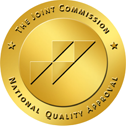Percocet is a powerful prescription drug and is also an opiate. Like other prescription painkillers with oxycodone as their main ingredient, including OxyContin, Percocet causes users to develop a tolerance and is highly addictive. This means that over time, you will need to use more and more Percocet just to feel the same way. This may seem like a dream come true for whoever is selling Percocet, but it’s a nightmare for everyone else.
Quiz Maker – powered by Riddle
Once a user has developed a Percocet dependency, any attempt to stop using the drug typically results in painful withdrawal symptoms. In fact, this experience causes many people to relapse and stay addicted. Others keep using Percocet because they simply want to feel “normal,” and their new normal means using the drug. Does this sound familiar?
Percocet itself is almost the same as many different drugs, in case you believe that substituting one for another means you can’t be addicted:
- Endocet
- OxyContin
- Oxycocet
- OxyFast
- Percodan
- Oxygesic
- Roxicet
- Roxicodone
OxyContin may be the most famous version of this drug, but Percocet is a close second. Both have triggered a wave of addiction in America.
What are the Signs Percocet Addiction?
If you’re worried that you might be addicted to Percocet, turn an honest eye to look for these signs of Percocet addiction:
- A need for high doses of the drug to manage the same pain symptoms (tolerance)
- Chronic constipation
- Antisocial or criminal behavior to get more Percocet
- Dry mouth
- “Doctor shopping,” seeing multiple doctors to get more Percocet
- Euphoria
- Extreme drowsiness, sometimes falling asleep in a public place
- Hoarding Percocet
- Headache
- Lightheadedness
- Itching
- Nausea and vomiting
- Low blood pressure
- Respiratory suppression
- Pinpoint pupils, or dilated pupils with overdose
- Sweating
- Sedation
Remember, if you’re like many others who are addicted to Percocet, you might have never imagined things going this far. Many Percocet addicts began by taking the drug just like they were prescribed, after a surgery or injury, when their doctor prescribed it to them. If you started this way, you’re not alone; however, you shouldn’t believe that just because you have or had a prescription, you don’t have a problem.
The Risks and Effects of Percocet Addiction
The risks and effects of Percocet addiction are numerous. Short term effects of Percocet addiction look like this:
- Putting drug seeking behaviors before everything else
- Laxative and antihistamine abuse, mostly to fight chronic constipation and itching
- Neglecting family, relationships, health, work, and other important parts of life
- Avoidance of responsibility
- Theft of money or valuables, even from close relatives and friends
- Tendency to blame other people or things for every problem
Do you see yourself in these behaviors?
Percocet addicts are at risk of overdose every time they use. Some signs of Percocet overdose include:
- Confusion
- Aspiration of vomit (breathing vomit into the lungs)
- Constipation
- Cyanotic, or bluish appearance to fingernails and lips
- Constricted pupils that don’t react to light
- Difficult or slowed breathing
- Extreme sedation, can’t wake up
- Drifting in and out of consciousness
- Nausea and vomiting
- Respiratory arrest
- Passing out cold
- Unresponsiveness, even to painful stimuli
Over the long-term, being a Percocet addict changes your brain. It increases dopamine activity, a crucial neurotransmitter connected to the brain’s reward system. Your brain experiences the feeling of need and reward in connection to Percocet once this change takes place.
Percocet Addiction Self-Assessment – Free and Private
If you’re ready to get some answers, take this Percocet addiction self-assessment. It is private and free, and if you want more information on getting help, you can get that here, too.




